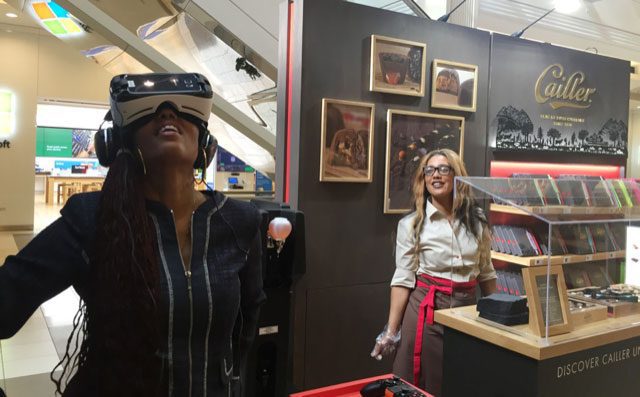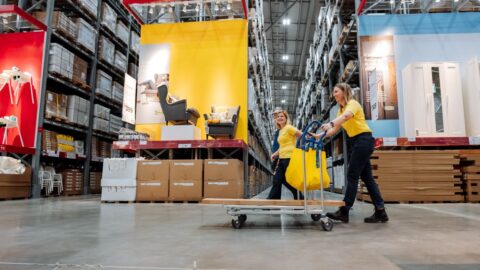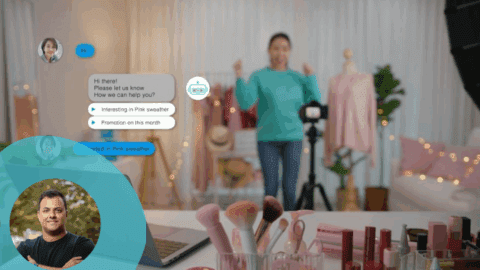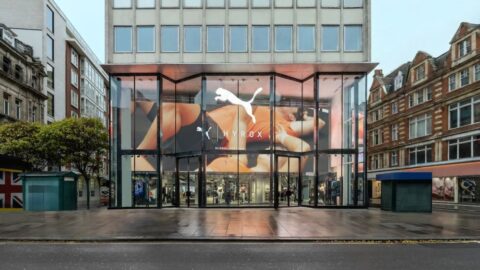Photo courtesy of Groove Jones.
Is virtual reality ready for prime time in retail? The truth is, some may argue yes and others may argue no. The technology — which is a computer-generated simulation of a 3D image or environment that can be interacted with in a seemingly real or physical way — is definitely disrupting the industry. Yet, experts agree that it’s still in the very early stages, with retailers just beginning to dip their toes into its possibilities.
However, retailers should note that consumers may be ready for VR — or AR, which is a technology that superimposes a computer-generated image on a user’s view of the real world — right now. New research from L.E.K. Consulting shows that 70% to 80% of “early tech adopter” consumers are eager to use virtual reality technology to design rooms, try on clothing, customize products and take virtual shopping “trips” with friends in different locations. In addition, 46% of consumers already have tried some form of VR.
“VR can be one of the tools that retailers use to engage with consumers and build loyalty and affinity,” said Maria Steingoltz, Managing Director and Partner at L.E.K in an interview with Retail TouchPoints. “It should be one of the arrows to have in their broader omnichannel strategy. While it’s not the be-all-end-all kind of solution, it should be one of the tools that are considered.”
Even though consumers are on board, some industry thought leaders are not quite sold on the idea of VR in retail. Paula Rosenblum, Managing Partner at RSR Research, has even said that VR “has almost no value in retail.” But there are early adopters that are proving the skeptics wrong. Retailers such as Lowe’s, Swarovski, Nestlé, IKEA and Body Language Sportswear all have offered VR experiences for their consumers to:
- Enable unique in-store experiences, including endless aisle capabilities and guidance for DIY projects;
- Help shoppers better visualize products in their homes, such as the look of different finishes or what a room would look like from a child’s point of view; and
- Give consumers easy access to products and places that may not otherwise be easily accessible, for example, a virtual tour of the Nestlé factory in Switzerland.
This feature will explore the possibilities of VR and best-in-class examples of it in retail. It will uncover what it takes to implement VR into your business, including costs, types of experiences and more.
Types Of VR And The Costs To Bring Them To Market
The arrival of VR has retailers curious and looking for ways to integrate it into their business strategies. But before retailers dive in, it’s important to understand the role it will play as well as the costs involved. Adam Pressman, Partner at A.T. Kearney suggests asking:
- What are you trying to do from an engagement standpoint?
- How does it link in with existing marketing approaches?
- How does VR complement or supplement your marketing approach?
There also are two broad approaches to VR, according to Dan Ferguson, Partner and EVP of Interactive Digital — Virtual Reality Strategy at Groove Jones, a company that specializes in creating VR content and digital interactive experiences for brands:
One type of VR is 360º videos, which Ferguson said: “are great for telling real-life stories, touring locations and quickly transporting and immersing people into a marketing message.” Requirements and associated costs for these assets include:
- Basic video production costs to create the content.
- Live action production, ranging from $30K to $50K for simple executions and $50K to $200K for more complex effects.
- Post-production costs kick in once live action content is captured, ranging from $20K to $250K and up, depending on the specific creative elements of each production.
- Tools to deliver 360º videos include VR headsets, the customer’s smartphone and social channels. “Almost every social channel now supports 360º video content, and they are very popular,” said Ferguson.
The second category, Interactive VR productions, “allow customers to fully interact with a product or narrative message,” according to Ferguson. “For developing Interactive VR experiences, you have to create the entire world that you are immersing the user into, as well as designing and programming the interactions and mechanics of the experience,” he said. “Based on the overall creative direction, production scope, schedule to create it, platform and delivery details, you can expect multiple software engineers, 3D artists and animators, level designers, sound engineers and composers, writers, Q/A Testers and production support working on one production. These types of productions can start from $100K and go up from there. We have had such productions range from [between] $100K and $750K to over $1M.”
There are a variety of VR headsets to consider these days, but Ferguson emphasized that only a few are dependable and have been proven to fully support interactive VR experiences. “We generally use the HTC Vive or the Oculus Rift for such experiences,” he said.
Best-In-Class Examples Of VR In Retail
Forward-thinking retailers have already begun to incorporate VR strategies into shopping experiences. Here are a few early success stories:
Swarovski Extends The Aisle With VR
Last month, Swarovski partnered with Mastercard to launch a VR shopping app for the retailer’s Atelier Swarovski home décor line. Through the app, consumers can view a decorated home where they can browse and purchase the products using Mastercard’s digital payment service Masterpass.
“VR is solving a problem for Swarovski — they came to us and had this beautiful line of things that they couldn’t show in a store,” said Sherri Haymond, EVP of Digital Partnerships at Mastercard in an interview with Retail TouchPoints. “We worked with them to create a video and in the glasses, when you look at the various items and pause on them, information [about the product] pops up. By moving your head and eyes, you can then add the products to a cart. Then, by blinking, you authenticate and check out via Masterpass technology. VR helps bridge the gap between physical and digital for Swarovski.”
Nestlé Gives VR Factory Tours
VR also can showcase events and reveal the inside of a brand’s operations. Nestlé did the latter, using 360º videos to tell a story of how its chocolate is made in its factory in Switzerland. “The videos showcase their factory, the farmer and dairy cows that produce the milk and chocolatiers preparing delicious treats,” said Ferguson. “The videos are being shown at pop-up stores in malls in the U.S., where customers can watch the video in headsets before receiving a sample of the chocolate.”
VR Introduces Lowe’s Customers To DIY
In order to enable customers to better visualize and learn about their DIY projects, Lowe’s integrated VR experiences in some locations. Customers can receive tutorials on how to install tiles in a virtual bathroom, for example. Ferguson said that the retailer has seen a “40% increase in recalls for people who did the DIY VR experience over just watching a DIY video.”
IKEA Creates Virtual Kitchen Tour
Similar to Lowe’s, IKEA created a VR experience for consumers to explore and interact with its variety of kitchen offerings. Customers can open drawers, see visuals of different material finishes and even experience the rooms from a child’s point of view, according to the IKEA web site.
As VR gains steam in the retail industry, it’s important to note that it can be cost prohibitive. It’s also not for everyone, and retailers must decide whether their customers would gain value from VR, as opposed to it’s just functioning as an entertaining add-on.
“The biggest challenge right now is figuring out what the user experience is going to look like,” said Todd Richmond, Fellow at IEEE, the technical professional organization for the advancement of technology, and Director of the Mixed Reality Lab at the University of Southern California, in an interview with Retail TouchPoints. “Retailers should be realistic and understand that it’s still a work in progress; it’s not a finished beast.”













